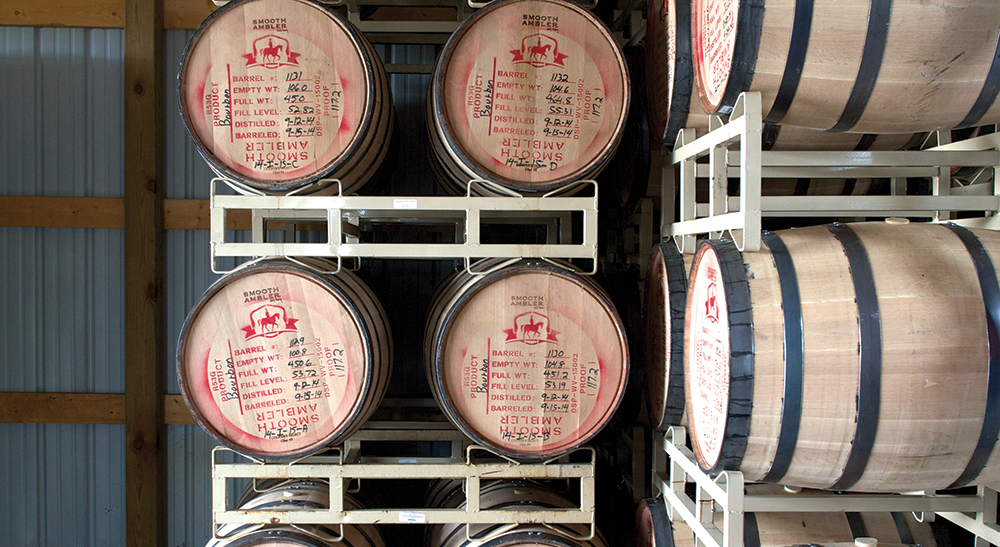Defining Craft
The bourbon boom has stirred up some intrigue
Article by Fred Minnick
American whiskey is going through a growth spurt right now resulting in lawsuits, investors giving founders the boot, and debates starting over fanciful terminology. At the center of all this is the meaning of the word “craft” and who should use it.
In 2014, Diageo, the world’s largest spirits company, started emphasizing its so-called craft whiskey portfolio a little more than usual. This brought up the interesting debate of whether a conglomerate should use the term typically associated with small producers who use 50-pound bags of corn versus trailer truckloads of grain. Craft whiskey was a phrase typically reserved for the little guy.
But some so-called craft whiskey makers were not actually making their own whiskey—they were purchasing bulk whiskey from the conglomerates and then marketing themselves as craft. Templeton Rye Whiskey is currently fighting three class-action lawsuits for allegedly deceiving consumers that the product was made in Iowa when it was actually produced in Indiana.
Then there’s the straw that broke the craft camel’s back: The most pure and genuine craft distiller gets into a legal battle with his investors. Chip Tate, the founder of Balcones of Waco, Texas, was served a restraining order and not permitted onto company property. He did not follow the judge’s orders, created a new Twitter account despite receiving a gag order, and was found in contempt of court.
So, the above examples are just three slightly different American whiskey dramas unfolding around this lovely and very undefined category of craft whiskey. Allow me to offer a drop of fine “craft” bourbon to help restore your confidence in the small-business American distilleries.

You’ll find no better example of craft than in Western Kentucky at a small distillery called MB Roland. Created by Iraq war veteran Paul Tomaszewski in 2009 and using his wife’s maiden name, Merry Beth Roland, MB Roland is a touch of Kentucky pride and a whole lot of incredible bourbon. They make whiskey from the highest-possible grade of American white corn, Midwestern rye, and barley to forge some of the best young whiskeys on the current market. The whiskey is difficult to find, but is available in Kentucky and surrounding states. I’m a huge fan of the single barrel, a two-year-old whiskey with a palate that is like dipping your finger in a vanilla cake batter bowl and taking a lick. Followed by touches of caramel, leather, and tobacco, the bourbon gives a tickle of cinnamon.
Right now, nearly every American state has a distillery or two. Washington, Oregon, New York, and Colorado are hotbeds. They all have their own styles. Sadly, craft whiskey was often associated with an overly tannic, too-woody note that was off-putting to traditional bourbon drinkers. I’ve argued this woodiness is a virtue, a smokelike property that is to be embraced, but Kentucky bourbon drinkers like Kentucky bourbon or something in that style range.
In addition to Balcones, Texas boasts another outstanding distillery in the Garrison Brothers Distillery in Hye, Texas. Their bourbons border greatness with every drop, packing a complexity that’s not found in most bourbons below $75. A little closer to Kentucky, West Virginia’s Smooth Ambler is something of a hybrid distillery. They’ve made their name sourcing whiskey from the former Seagram’s distillery I mentioned in a previous column—titled “Rye Not?”—for a product line called Old Scout. But this sourced whiskey project has been a means of paying the bills, while the distillery lays down its own whiskey that’s superb and similar to younger Kentucky bourbons.
If you think about it, the West Virginia climate is similar to Kentucky’s, with equally brutal winters and summers. But Smooth Ambler is 2,000 feet above sea level, giving an extra element that makes their whiskey unique. The product they distill, Smooth Ambler Yearling, is a lovely two-year-old bourbon with a cornbread nose and hints of herbs and fresh-cut grass. The palate features roasted corn, pumpkin, saddle leather, spice, and a cinnamon finish that’s gentle on the way down.
In Illinois, Few Spirits makes award-winning bourbon. Colorado’s Leopold Brothers rye is harder to find than Pappy Van Winkle. In New York, take your pick of great small distilleries perfecting bourbon recipes.
As these companies grow, they’ll add fermenters and distillation equipment, and will be synonymous with bourbon perfection. By then, the word “craft” will be a little more defined.





